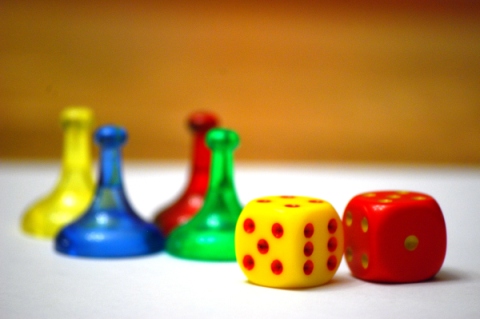Why bring games into your classroom?
I have always been a fan of games. I love playing all types…Computer games, board games, card games, it does not matter to me! In fact, I enjoy games so much that I began making my own when my family purchased our first computer (which was 1981!!!). When I began my teaching career (now 15 years ago!) I wanted my class to understand that math can be fun– by finding ways to make a game of the topics I was teaching (especially fundamental concepts). And all this was before the explosion of on-line/mobile games and readily available technology.
I also want to make the point that I am not always referring to computer games. There are plenty of games available ( “24” and “Set” are two examples; Additionally, refer to this post on games for preschoolers and early education.)
So, why bring games into your classroom? Here’s 7 (seven!) reasons:
Games are inherently more engaging.
Which is more engaging– doing a review a worksheet or 10 problems written on the board…or playing a game that reviews the same concepts? I realize that not all students will enjoy playing games, BUT, given the choice… I believe (and have experienced) students will choose playing the game.
Games stimulate critical thinking
Games will force the player to think about other things as they are using their math skills. Students will need to ‘think ahead’ or develop strategies to finish a level or win, either against an opponent or against the game itself.
Games practice problem solving
Math is about problem solving– especially when students have to apply many parts of their learning to solve a problem they haven’t seen before. Each time they play a game multiple times, they will find themselves in different situations…What do they need to do to win this time (or just do better at the game)?
Games are easy to differentiate
You can group kids by ability level or play ‘easy’ or ‘hard’ versions of games. I specifically created Addition Blocks and Multiplication Blocks to have 3 speed and difficulty settings, plus multiple game modes.
(Computer/App/Mobile) Games meet the students need for visual stimulation
No doubt about it, even the youngest of kids are now iPad savvy and are engaging in a lot of screen time. Bringing in good, applicable games will meet their need for the visual stimulation (in moderation, of course).
Classroom Games meet the students need for socialization
Most kids love to talk, play, and work together. Classroom games bring all the students together to play a game. Even a game like Percent Bingo, where each student has their own board, the students are all playing as a group.
Games are, simply, more fun.
What would you rather do? Play a game or sit in class and do worksheets or problems from a book?
One last important item. Do YOU enjoy playing games? If you do not enjoy playing games yourself, then trying to bring in games to your classroom may be difficult. A teacher’s lack of interest would noticed/sensed by the student. If you are not having fun, the students will not have fun.


